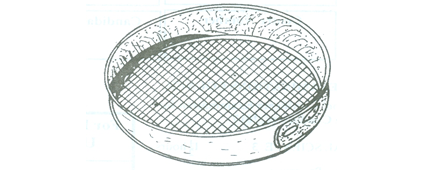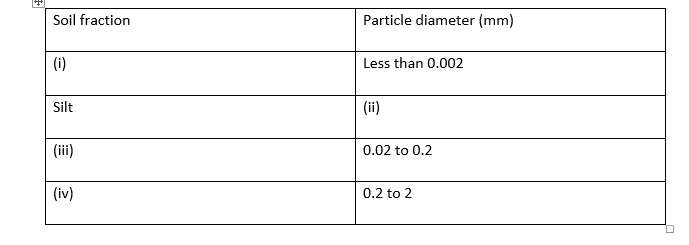Question 1
- Study the tool illustrated in diagram below and use it to answer the questions that follow.

(a) Identify the tool illustrated. (1 Mark)
(b) (i) Mention one use of the tool in soil analysis. (1 mark)
(ii) State three ways of maintaining the tool. (3 Mark)
(c) Study and complete the table below.

(d) A laboratory analysis of a soil sample showed a pH value of 3.5
(i) From the pH value of the soil, indicate the condition of the soil. (1 Mark)
(i) List five materials that could be used to correct the condition of the soil mentioned in 1(d) (i) above. (5 Mark)
Observation
Majority of the candidates were able to identify the tool (sieve), state its use but could not mention how the tool can be maintained. Most candidates correctly stated the soil condition with pH value of 3.5 but could not, apart from wood ash, mention other materials that could be used to correct the soil condition. Worth acknowledging is that filling the table of soil fraction and particle diameter was well tackled by candidates.
The expected answers include:
1. (b)(ii) Ways of maintaining the farm tool (Sieve)
- Clean after use/wash and dry
- Keep in cool dry place/keep away from moisture
- Replace wire mesh when damaged.
(d)(ii) Materials used to correct the soil condition (acidity)
- Limestone – CaCO3
- Dolomite – CaCO3MgCO3
- Gypsum – CaSO4 2H2O
- Quicklime – CaO
- Wood ash
- Slaked lime – Ca(OH)2
- Basic slag – Ca2(OHS1O3)2
- Calcium bicarbonate – Ca(HCO3)2
